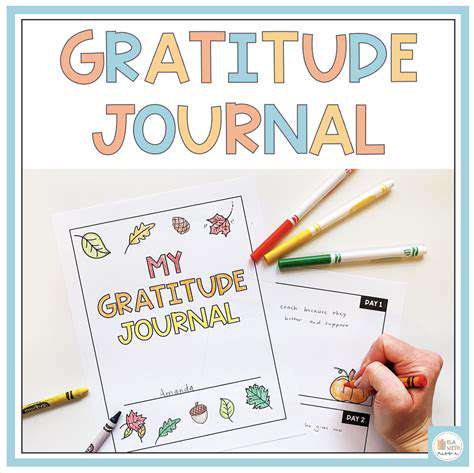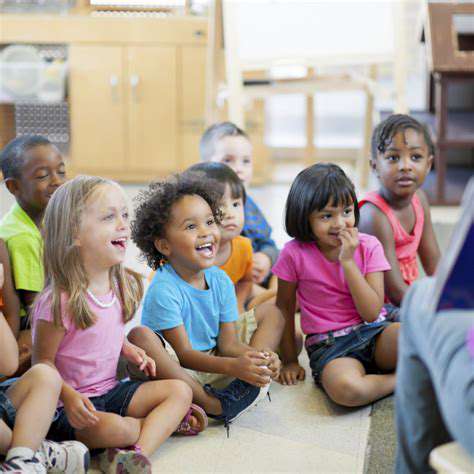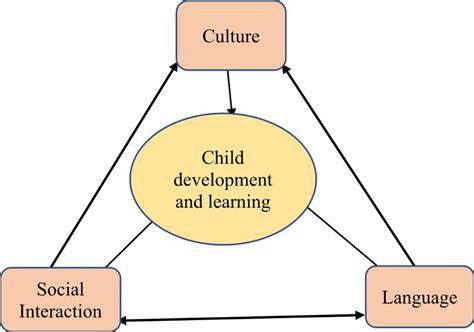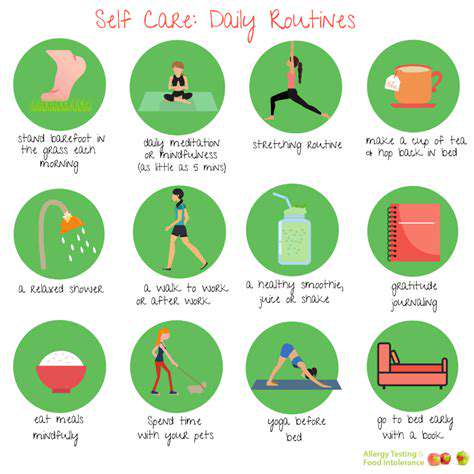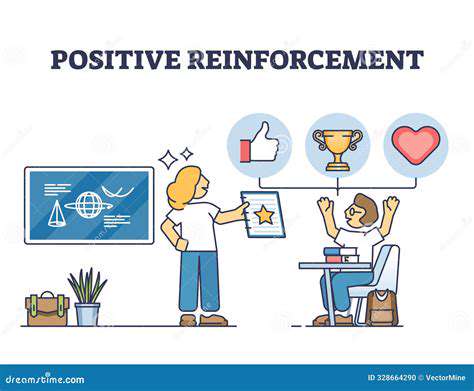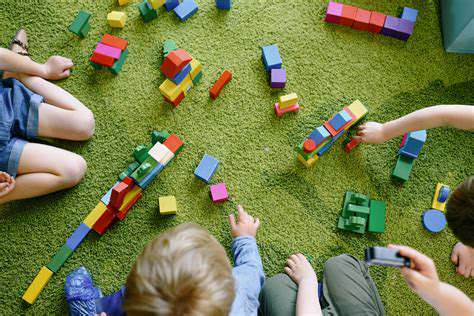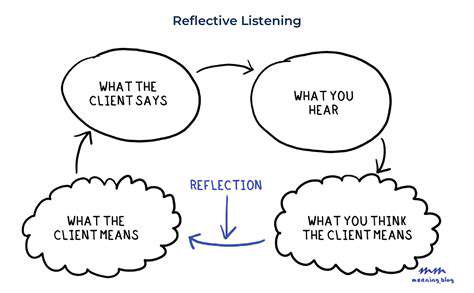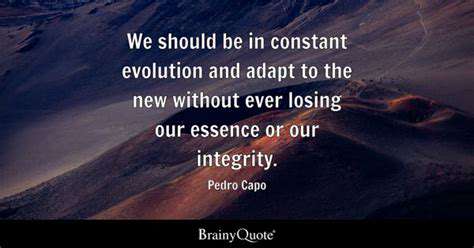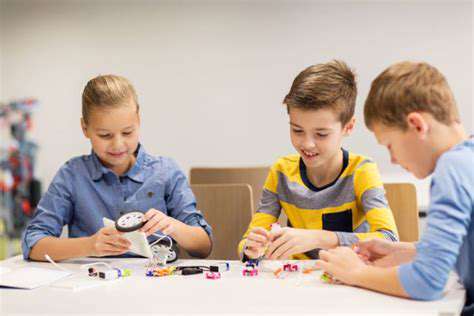Tantrum Tamers: Strategies for Calming Emotional Outbursts
Simple grounding techniques can work wonders. Try the 5-4-3-2-1 method: name five things you can see, four you can touch, three you can hear, two you can smell, and one you can taste. This sensory inventory helps short-circuit emotional escalation by bringing your focus back to the present moment. It's remarkable how shifting your attention to neutral physical sensations can diffuse emotional intensity.
Creating a Supportive Environment
Our surroundings profoundly influence our emotional state. Think about creating emotional safe zones in your home or workspace - areas designed to promote calm. These might include comfortable seating, soft lighting, or calming colors. The physical environment can serve as a powerful anchor when emotions feel overwhelming.
Equally important is cultivating relationships where emotions can be expressed without fear of judgment. This means practicing active listening - giving others your full attention without immediately jumping to solutions or criticism. Sometimes people don't need fixes, they just need to feel heard.
Utilizing Relaxation Techniques
Relaxation isn't just for spa days - it's an essential life skill. Progressive muscle relaxation, where you systematically tense and release different muscle groups, can be particularly effective for physical manifestations of stress. This technique teaches your body the difference between tension and relaxation, giving you more control over your physiological responses.
Breathwork is another accessible tool. Try box breathing: inhale for four counts, hold for four, exhale for four, and hold empty for four. This rhythmic pattern activates the parasympathetic nervous system, acting as a natural tranquilizer for frazzled nerves.
Communication and Conflict Resolution Skills
Clear communication acts as preventive medicine for emotional outbursts. Using I statements (I feel frustrated when... rather than You always...) keeps conversations from turning confrontational. This simple linguistic shift can transform arguments into productive dialogues.
Time-outs aren't just for kids - they're a valuable conflict resolution tool for adults too. When emotions run high, proposing a 20-minute break allows both parties to regain composure. This pause often means the difference between saying something regrettable and responding thoughtfully.
Seeking Professional Help When Needed
Sometimes emotional regulation requires specialized support. Therapy isn't just for serious problems - it's like having a personal trainer for your emotional wellbeing. A good therapist can help identify blind spots in your emotional patterns and teach tailored coping strategies.
Don't wait until you're in crisis to seek help. Regular mental health check-ins can help maintain emotional balance, just as dental cleanings prevent cavities. Preventative mental healthcare is just as important as preventative physical care.
Building Coping Mechanisms
Developing a personal emotional first aid kit means identifying activities that reliably restore your equilibrium. For some people, it might be creative expression through art or music. For others, physical activity or nature connection works best. The key is having multiple tools available, as different situations may call for different approaches.
Regular self-care isn't selfish - it's foundational for emotional resilience. Like putting on your oxygen mask first before helping others, maintaining your emotional reserves ensures you have the capacity to handle life's challenges without constant meltdowns.
Building Emotional Regulation Skills

Developing Self-Awareness
Emotional self-awareness begins with becoming a curious observer of your inner world. Start noticing how emotions manifest physically - maybe anxiety feels like butterflies in your stomach, while anger might create heat in your face. These bodily signals are your personal early warning system for emotional storms.
Understanding the why behind emotions transforms them from mysterious forces into manageable experiences. Ask yourself: What need isn't being met when I feel this way? Often, frustration stems from unmet expectations, while sadness may signal a need for connection. This insight turns emotions from enemies into messengers providing valuable feedback about your needs.
Identifying and Managing Triggers
Trigger mapping involves detective work to identify your emotional hotspots. Keep a log of situations that consistently evoke strong reactions - certain times of day, specific types of interactions, or particular environments. Patterns will emerge that reveal your personal vulnerability zones.
Once identified, you can develop strategic workarounds. If rush hour traffic triggers road rage, maybe audiobooks or calming playlists can transform commute time. The goal isn't to avoid all triggers but to develop adaptive responses that maintain emotional balance.
Practicing Coping Strategies
Effective coping strategies work like emotional shock absorbers. Grounding techniques that engage the senses - like holding an ice cube or smelling essential oils - can provide immediate relief during emotional surges. These concrete sensory inputs help anchor you in the present moment when emotions threaten to overwhelm.
Long-term resilience comes from lifestyle habits that regulate your nervous system. Regular physical activity, adequate sleep, and proper nutrition create a physiological foundation for emotional stability. You can't expect to manage emotions well when running on empty - self-care is the bedrock of emotional regulation.
Behavior shaping through positive reinforcement creates lasting change by focusing on what works rather than what's wrong. When we consistently acknowledge and reward desired behaviors, we're essentially programming new neural pathways. This approach fosters growth while preserving dignity and self-esteem - crucial elements in any learning process. Whether with children, employees, or even ourselves, positive reinforcement builds confidence along with capability.
Creating a Supportive Environment
Understanding the Triggers
Decoding emotional outbursts requires looking beyond the surface behavior. A child's meltdown in the supermarket might actually be about sensory overload rather than willfulness. By becoming detectives of behavior rather than judges of it, we can address root causes instead of just symptoms.
Developmentally appropriate expectations are key. Young children lack the prefrontal cortex development for sophisticated emotional regulation - their outbursts often represent normal developmental challenges rather than behavioral problems.
Creating a Predictable Routine
Structure provides the emotional security blanket children need to explore their world confidently. Visual schedules using pictures or simple words can help younger children anticipate transitions between activities. Predictability reduces anxiety by making the world feel more manageable and less overwhelming.
Active Listening and Validation
Validation doesn't mean agreeing with all behavior - it means acknowledging the feelings behind it. Simple statements like You're really disappointed we can't go to the park today help children feel understood. When people feel heard, their need for dramatic emotional demonstrations often decreases significantly.
Responding with Empathy and Patience
Emotional co-regulation is powerful - our calm can become their calm. By maintaining steady breathing and a relaxed posture during a child's outburst, we model the regulation we want them to develop. This non-verbal teaching often speaks louder than any words.
Building Emotional Regulation Skills
Emotional vocabulary development should start early. Using rich feeling words in everyday conversation (You seem proud of that drawing! or That sounded frustrating) builds children's capacity to identify and articulate emotions. Precise emotional language enables more nuanced self-expression and reduces reliance on acting out.
Providing a Safe and Secure Space
A peace corner stocked with comforting items (stress balls, weighted blankets, calming jars) gives children a tangible tool for self-regulation. Having a designated retreat empowers kids to take an active role in managing their emotional states.
Positive Reinforcement and Praise
Effective praise focuses on effort and strategy rather than innate qualities. Instead of You're so smart, try You worked hard to figure that out! This type of reinforcement encourages persistence and resilience - key components of emotional regulation.
